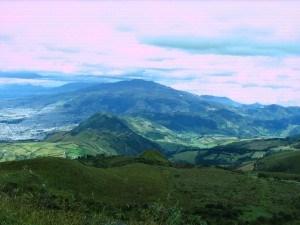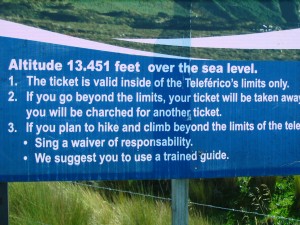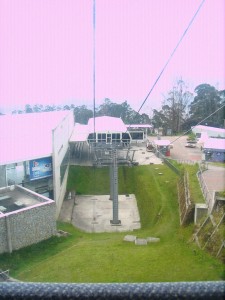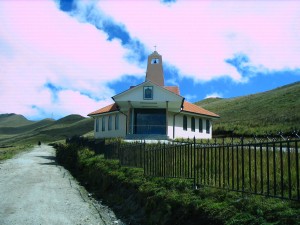Strays
Alvaro stood near the pedestrian bridge on the Avenida 10 de Agosto. Barely anyone noticed him. Cars whizzed by on the big, busy road. Drops of milky water fell from the bridge beams. Exactly three cats had crossed the bridge, and Alvaro was waiting for the fourth. Four cats never cross the bridge in one day, the older boys had told him.
Grabbing a stick from the sidewalk, Alvaro tapped out a reggaeton beat on the hollow metal pillar; no one paid him any attention. He’d been counting the cats for days now. In this neighborhood, he’d seen at least 15. Junior had told him not to believe the big boys; they were just messing with him because he was motherless. Kids can be cruel like that.
Let them laugh, Alvaro thought. Murderers. No one was going to talk him out of counting cats. One of these days, he’d see the fourth one. Perhaps he’d have to stay here all day, waiting by the dirty pillars of the bridge, inhaling the clouds of black smoke that spewed from the red and white buses that labored up the road; perhaps he’d have to keep begging food from strangers, to sleep in the shadows of the bridge and befriend its spray-painted pillars while he waited for whichever came first — the fourth cat, or his father, who left and said he was going to the sky to find Mami and bring her back from the place where she lived now, higher than the top of Cotopaxi.
Quechua graffiti on the bridge beams — mostly misspelled and mixed with Spanish — proclaimed the injustice of the city and its crooked politicians. Rats, it called them: ratas, ukucha. She appeared from behind him, the fourth cat. Taking a tentative step onto the stairs, she peered back at Alvaro and meowed at him three times. Under the bridge, Alvaro stood speechless and breathless at what he thought he’d heard: “mijo,” she’d said — my son. Venturing forth, Alvaro extended a tender hand toward the cat, noticing the patch of white on her chest that looked like the snow-capped top of Cotopaxi. Whether or not she’d cross the bridge to the other side mattered no longer; he only wanted to touch her. But the moment was over too soon when some passer-by with a job to go to climbed the stairs and scared the little cat off the steps.
Years have passed since then, and though he has sometimes seen that same cat lurking in the shadows, following him around the city, he has never touched her, never heard her speak his name. Zig-zagging across the busy streets, digging through the trash, and crying for remembered milk, Alvaro has become a cat himself.
The above was another exercise from my MFA residency. The objective: write a 26 sentence story. It has to be in alphabetical or reverse alphabetical order. One sentence has to be one word long; one sentence has to be 100 words long. You can substitute some other letter for x or z but not both.




